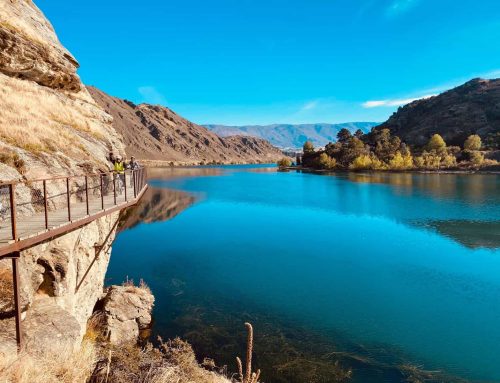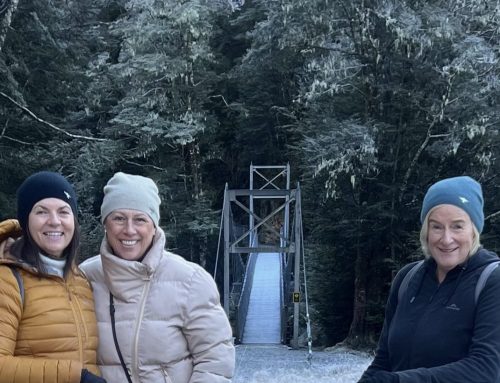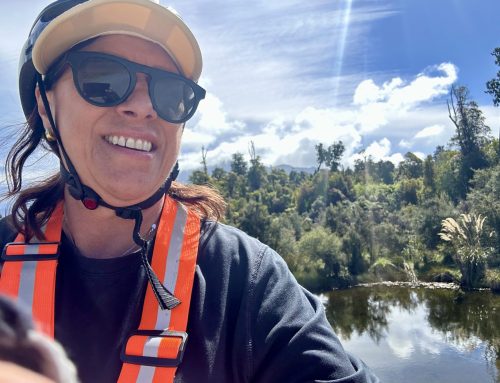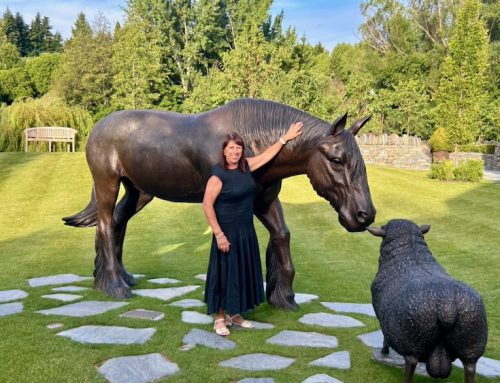Almost every Saturday as a child, I waited eagerly for my father to return from work at midday. After a quick lunch, we would pile into the Falcon Station Wagon. Fighting with my siblings for the best seat on the car, which was in between my parents on the bench seat, we would head north to our beach house on the Kapiti Coast.

Kapiti Island from Waikanae Beach
Quickly unloading the car, we would head off to meet up with our Waikanae friends and commence our adventures. Kayaking, eeling, white baiting in the Waimea Stream and surfing, swimming and drag netting in the warmer months.
Despite what we were doing, there was one vista that never changed, Kapiti Island.

The sun slipping behind the island
Wherever we were or whatever we were doing Kapiti Island was always in sight. I used to imagine who lived on this desolate, lonely island when faint light could be seen at the northern end of the island at dusk.
Having never visited the island, I finally got the opportunity recently. As we boarded the small ferry from Paraparaumu’s Boating Club car park, a tractor towed us into the tide. We were on our way.

With no jetty on the Kapiti Coast, the boat needs to be towed to the water
It took us 15 minutes to reach the northern end of the island where we were met by Wayne, a relative of descendants who still own a small part of the island. This is the only part of the island privately owned as the crown have bought the rest, now managed by DOC.
Wayne and his Whanau have enabled people to experience a night on the island, with accommodation for up to 24 people. We glamped, but there were also small huts as well as a communal bunk room.

My tent for the night
After settling in, Wayne gave us a briefing before setting off to explore the island. Taking the coastal walk around the boulder bank, the shrubs were alive with noisy sea nesting birds. Angrily squawking, they tried to scare us off.

The friendly Kaka are happy to get really close

Walking the coastal walk around the boulder bank, the area was alive with sea birds nesting
The island has had a chequered past since its discovery by James Cook. Originally, it was a whaling station in the early 1800s. Once the whaling began to decline in the 1840s the native bush was scorched so the land could be farmed. Sheep, goats, pigs and deer were introduced as well as rats, stoats and cats. This decimated the birdlife. Then in 1897, the Prime Minister of the time, Richard Seddon passed a bill to ’conserve the fora and fauna of the island.’ The farm animals were relocated to the mainland, and a pest exterminating programme began. Kapiti Island is now a predator-free reserve. To ensure the island remains this way, a rigorous bio-security screening programme is enforced.
After dinner, we set off with Wayne on an expedition to find the prized bird on the island, the Little Spotted Kiwi or pukupuku. Despite hearing the calls from both the male and female multiple times, we did not see one. However, the bird song in the dark of the night was unbelievable, dominated by the Kiwis and Morepork.
However, we did come across a lone, very smelly Little Blue Penguin. The other birdlife surrounding my tent was extensive including an elderly Kaka, suffering from mild dementia, Kereru and Wekas.

This elderly Kaka spends her days near the lodge and loves nothing more than destroying the wooden seat

In the tree outside my tent, four Kereru happily fed

Wekas were plentiful with their beautiful egg-shell blue plume
The following morning we were ferried to the southern end of the island. Here we commenced our walk up Wilkinson Track to the island summit, 521 metres. Walking through the mature bush we saw a Saddleback, Bellbirds, North Island Robin, Tui and Stitchbird.

We enjoy our lunch at the summit of the island after a tough walk to the top
We eventually reached the top, enjoying our picnic lunch before commencing our descent. Back at sea level, we were incredibly lucky and found a Takahe. They used to roam freely throughout New Zealand, but by the beginning of the 19th century, they were feared extinct. They are ill-equipped to deal with introduced predators, particularly stoats, which eat their eggs and young and attack the adults. It is believed that there only 300 remaining in protected environments.

Our prized find, the Takahe
Returning to the mainland, I had a real appreciation of the foresight of previous generations to regenerate the bush and bring back the birdlife. To see our native birds breeding in their natural, predator-free habitat was a privilege.






Dear Jane,
What a splendid recount of family memories with dear Margaret and Paul so desirous that you and your siblings have the most magnificent childhood possible with weekends by the ocean surrounded by scenes of great natural beauty .
Then to record your Kapiti island visit with vivid description and pics of the sea birds and sunsets….what a delight.
Arohanui,
Bill and Shona and our others.
Lovely to hear from you Bill. I hope you are all well. A worthwhile trip for so many reasons.
I enjoyed reading about your trip very much. Exellent, jucy as always. You should write a book.
Thanks Andreja, When are we going to see you again?
Kapiti was not ‘discovered’ by Captain Cook, it was used as a Maori military stronghold long before Europeans arrived.
Thanks for the correction
Beautiful and interesting story as always Jane. Tim and I loved reading it. Thank you!
Thanks Penny, pleased you and Tim enjoyed reading it
Thank you for all your inspirational and informative travel stories within New Zealand…..so much to do. Special nostalgic trip for you x
You are too kind, but I am pleased you enjoyed reading it.